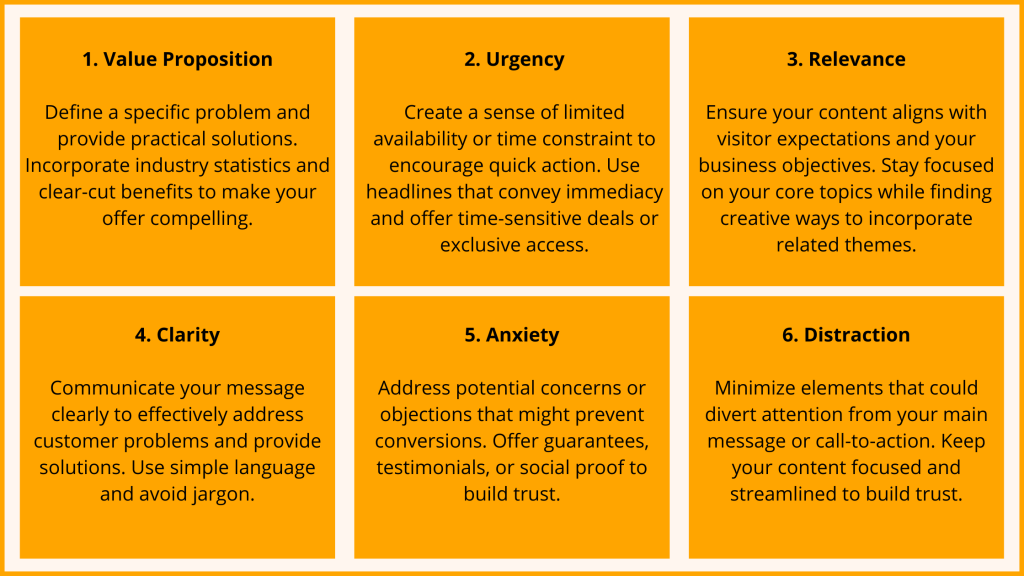
If you’re a business owner, creating content that resonates with your target audience isn’t just an option—it’s the foundation of success. Compelling content will capture your dream clients’ attention, guide them through their buyer’s journey, and ultimately drive conversions.
But it’s not as simple as stringing together words and sentences—it takes planning and strategizing.
With the abundance of information available online, it’s essential to craft content that stands out, informs, engages, and compels your audience to take action.
In this comprehensive guide, we’ll explore proven strategies and methods to help you create content that converts, ensuring your efforts yield tangible results.
Know Your Target Customer Avatar
Before creating content, you need to know your audience, aka your target customer avatar. With a customer avatar, you can generate a buyer persona that explores the mindset, priorities, decision-making factors, and path that influence prospective customers’ choices.
Having insight into this data will guide you in crafting content that directly resonates with them on a deeper, much more personal level. Effectively, you want to create content that speaks directly to your ideal customer.
To do this, conduct thorough market research to identify:
- •Pain points
- •Interests
- •Preferences
- •Social media habits
Understanding your target audience by constructing a customer avatar enables you to craft powerful marketing messages, finely targeted ads, and content that resonates powerfully with potential buyers.
Simply put, when you know how to get into the mind of your customer, you’ll know how to satisfy their buying needs.
Determine What Type of Content Works and What Doesn’t
Now that you have a clear picture of your target audience, you can start to generate content.
There’s really only one way to win when it comes to content creation—you need to write evergreen, original, authoritative content. Frankly, consumers are tired of reading the same content that’s cleverly rephrased and repackaged to sound original.
So, if you put in the effort to produce content developed by your knowledge, experience, and research, potential customers will notice, and the conversions will happen.
Here are the top 3 most effective ways to determine what type of content works and what doesn’t for your marketing strategy:
1. Analyze Existing Content Performance
Review the performance metrics of your current content across different channels. Look at engagement rates, conversions, time spent on a page, and other relevant KPIs to identify which content resonates most with your target audience.
This data-driven approach will help you make well-rounded, informed decisions about future content creation. It pinpoints what’s working and what needs to be scrapped.
2. Conduct Audience Research
Perform thorough audience analysis to understand your target audience’s response to your content.
This can be done through:
- •Surveys
- •Interviews
- •Focus groups
Gathering quantitative and qualitative metrics through audience research will help you understand what your customers and potential customers think of your content. Moreover, it will help you dial in on your weak points and curate better content.
If you aren’t already doing this, Google Forms is an excellent software resource that will generate the data you need.
3. Experiment and Measure Results
Test various content formats and track their performance. Use A/B testing to compare different content types and analyze which ones drive better results. Continuously refine and tweak your strategy based on these insights.
The following elements should be measured regularly:
- •Subject lines
- •CTAs
- •Headers
- •Subheaders
- •Body copy
- •Opt-in forms
The amount of valuable information you can gather will help the marketing team make data-backed decisions and refine their content strategy based on real-world performance data.
You can leverage the following analytics tools:
Remember to regularly review and adjust your content strategy based on performance and evolving market conditions.
Optimize for Search Engines
While creating content for your audience should be the primary focus, optimizing your content for search engines is equally crucial. Conduct keyword research, incorporate relevant keywords naturally into your content, and follow best practices for on-page SEO to improve your website visibility and rankings in search results.
Consider these key points:
- •Conduct thorough keyword research and focus on relevant topics
- •Create high-quality, in-depth content (1000+ words) that provides value
- •Use clear, keyword-rich headings (H2s and H3s) to structure your content
- •Optimize meta titles and descriptions for search results
Leverage Multimedia
As content evolves, so do customers’ expectations. We’re in a time when short clips are being used to capture consumers’ attention. Anything longer than a few seconds is no longer doing the job. In fact, long multimedia clips could be doing your brand a disservice.
Adding media formats, such as videos, infographics, and interactive elements that are short and condensed can boost the user experience and make your content more engaging and memorable. Visuals not only capture attention but also aid in explaining complex concepts more effectively.
Boost Your Conversions With the LIFT Model
With visitors reading only about 18% of a web page, the content needs to be packed with exceptional value, all captured using compelling language. How do you do this? By using the LIFT model.
LIFT stands for Landing Page Influence Function for Tests. This framework, typically used for landing page optimization, can be applied to any content creation to improve conversions.
Six key elements of the LIFT model:
By integrating these elements into your strategy, you can craft more compelling and effective marketing materials that resonate across various platforms.
Incorporate Data, Facts, and Statistics
The average internet user encounters a constant stream of information everywhere they click, on every page they peruse. What sets exceptional content apart is its foundation in facts. Consumers value factual information as it empowers them to make informed, educated, and financially sound decisions.
By weaving data, facts, and statistics into your content, you can capture the attention of your ideal audience and establish credibility.
Use Data in Your Headlines
Adding numbers, dates, and statistics in your headlines can significantly boost reader engagement and click-through rates. Studies show that headlines containing numbers are more likely to capture attention and generate interest.
By leveraging this insight, you can craft more compelling headlines that stand out and entice your audience to explore your content further.
Boost Your Click-Through Rate With Compelling Titles
Your title is the first thing web users see in search results, making it crucial for attracting clicks.
To improve your CTR:
- •Use powerful words to evoke emotions, such as curiosity
- •Include the current year to show relevance
- •Incorporate numbers for impact and clarity
- •Test headlines using tools like Monster Insights Headline Analyzer
- •Keep titles under 65 characters to avoid truncation
- •Include relevant keywords for better search visibility
Numbers can help your content stand out, while proper length ensures full visibility in search results. By crafting multiple options and testing them, you can identify the most compelling title for your audience.
Remember, a well-crafted title not only improves CTR but also sets expectations for your content, enhancing overall user experience.
Tell Engaging Stories
Storytelling is everything; it brings your brand to life, forges emotional connections with your audience, and makes your marketing messages more memorable and impactful.
Humans are hardwired to respond to stories. By weaving your brand’s message into compelling narratives, your customers will find a connection to what you’re selling.
Use storytelling techniques to illustrate how your products or services can solve their problems or satisfy their shopping needs.
From Disney to Coca-Cola, everyone uses this strategy because it works–and so should you!
Create Better Content, Start Seeing Tangible Results!
Whenever you create content, remember that promotion is crucial for gaining traction and improving search engine rankings.
LinkNow, a trusted digital marketing company, can manage your content creation and develop an effective content calendar to drive traffic, attract quality clients, and increase sales, producing tangible results. If you want to learn more about our approach, we encourage you to schedule a consultation with one of our reps.



Hey people!!!!!
Good mood and good luck to everyone!!!!!